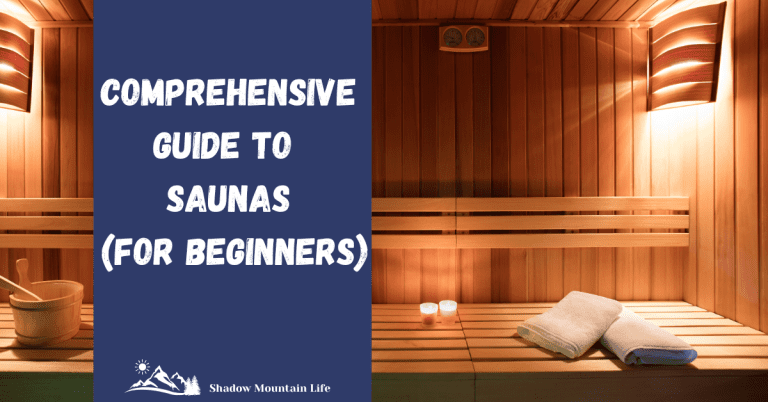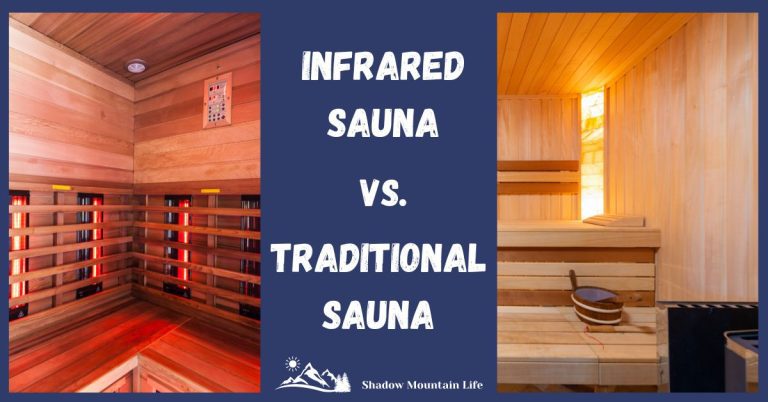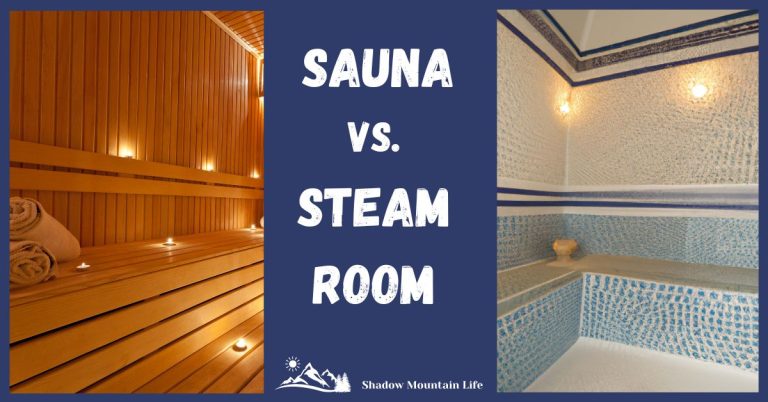The Best Sauna Temperature to Maximize Your Health
Medical Disclaimer: We are not doctors. The health information in the article is for informational and educational purposes only. Please consult your doctor or other healthcare professional when making medical decisions.
Affiliate Disclaimer: We may make a commission if you purchase something through our links. Thank you!
You may be wondering what the best sauna temperature is. And with all the different types of saunas available it can be confusing to know which type and what temperature will provide maximum health benefits. We are here to discuss the ideal sauna temperature and ranges you should be aiming for to get the most health benefits from your sauna experience.
Before jumping into a hot sauna, it is important to note that because each person’s body is different and can tolerate different heat levels, there is not one perfect temperature for everyone. We can only give an ideal temperature range that works for most people.
Things to Consider
Consider the following points when deciding how hot to sauna; the type of heat, kind of sauna, your personal health and wellness goals, and your current health status.
Different Kinds of Heat Matter
Dry heat versus wet steam heat versus infrared heat will all affect your body in different ways. A traditional dry sauna with low humidity may feel less hot than a sauna with steam and more humidity. This is due to the conduction of heat in the water molecules. And infrared heat is entirely different than traditional saunas as the infrared rays heat the inner core of your body instead of the air around you.
The Type of Sauna Used
Whether you are using a traditional or an infrared sauna will dictate the type and amount of heat you experience.
Traditional Finnish saunas can be used as a dry sauna or a wet sauna. It can be used as a wet sauna by throwing water to create steam which will increase the humidity in the room. A dry sauna is just one in which no water is thrown to create steam.
Finally, infrared saunas use infrared panels to conduct rays into the body and there is no stove or steam involved.
Your Personal Health Goals
What are your personal health goals in using a sauna? Is it for the detoxification benefits? To increase your metabolism and help with weight loss? Muscle recovery after a workout? Or simply for relaxation?
When choosing between different types of saunas, consider what your short and long-term health goals are.
Your Health Status
Before you start regular sauna sessions, you will want to take a full inventory of your health status. Some people should not use saunas including those with unstable angina, low blood pressure, on certain medications, have certain skin conditions, or are pregnant.
Make sure to check with your doctor before starting, and avoid alcohol when using the sauna.

Best Traditional Sauna Temperature
Traditional saunas operate at a higher temperature range than infrared saunas. They will typically run up to 200 degrees Fahrenheit. Most people find the greatest benefit between 170-190 degrees.
Adding steam by throwing water on the rocks will increase the humidity level and make the sauna feel hotter. The Rule of 200 states that most people will feel comfortable when the temperature and humidity equal 200. For example, a temperature of 160 degrees and a humidity level of 40% would equal 200.
You can monitor how hot a sauna is by using a thermometer and hygrometer combination which measures both temperature and humidity.
Because of the high temperatures you are exposing your body to, it is important to have a quick way to cool down. If you have an outdoor sauna, simply step outside with a garden hose or outdoor cold plunge pool. If your home sauna is indoors, you can take a cold shower with similar benefits and relief.

Best Infrared Sauna Temperature
Infrared saunas run at much lower temperatures than traditional saunas. Typically they are about 120-150 degrees Fahrenheit. Infrared saunas heat the core body temperature by infrared light waves emitting from electric panels within the sauna walls. These light waves penetrate the body deeply causing sweat.
During your infrared sauna session, experiment with the temperature and find out the best temp for you. You may sweat well at the lower end around 120, or you may find that your desired temperature is at the hotter end closer to 150. The number doesn’t matter so much as the fact that your body is sweating.
You will not have the option of steam in an infrared sauna, but you will be able to control the exact temperature more easily. You may also be able to stay in an infrared sauna longer and more comfortably due to the lower temperatures involved.
How Long Should I Stay in the Sauna?
If you are new to sauna use, limit your time when starting with either type. Stay in no longer than 5-10 minutes before taking a break. Regular sauna bathers can go longer as their bodies are more acclimated to the heat, but probably no longer than 20 minutes at a time.
If you want to repeat the cycle, step outside and give yourself some time to cool down and hydrate before going back inside the sauna. End your sauna session with a cold shower and more hydration with electrolytes.
Exit the sauna immediately if you begin to feel dizzy, nauseous, or light-headed.
Health Benefits of Sauna Sessions
One of the main reasons that people choose to sauna is for the health benefits it provides. Not only does the warm air temperature provide a soothing and comforting atmosphere, but when it comes to saunas, they provide some tested and true health benefits.
A few common health conditions that are alleviated by sauna use are listed below.
Treatment for Chronic Pain
One of the main therapeutic benefits of sauna use is the relief of chronic pain symptoms. Studies have shown that infrared saunas are better at relieving chronic pain conditions and can provide a more comfortable experience for those who cannot tolerate high heat such as those suffering from rheumatoid arthritis.
Improved Mental Health
A Japanese study verified that patients who used a sauna over 15 months experienced a decrease in anxiety and depression and reported an increase in mood.
Improved Blood Circulation
Both traditional and infrared saunas cause increased blood circulation by dilating the blood vessels and creating better blood flow. This brings more oxygen to the muscles, including the heart, and can be beneficial to heart failure patients. A study done on heart failure patients showed short-term cardiac improvement. More research is needed on the long-term benefits for heart failure patients.
Reduced Muscle Soreness
Muscle recovery is supported due to the increased blood flow caused by sauna use. This can be especially helpful to athletes or other people who are looking for a faster recovery after working out.
Sauna Thermometer Options
It’s important to have a thermometer to monitor your temperature in a sauna. Your sauna may come with an electronic one on the panel, but it is also convenient to have an analog one mounted on the wall. You can enhance your sauna with a thermometer and hygrometer combination if you prefer.

Photo: Redwood Outdoors
Redwood Outdoors Thermometer and Hygrometer
Made in Germany, this thermometer and hygrometer combination will help you monitor both the temperature and humidity level inside your sauna.
Traditional and Infrared Sauna Ideas for Your Home Sauna
If you are looking for a backyard sauna, both Redwood Outdoors and Sun Home Saunas have some great options, whether you are looking for a traditional or infrared version.

Redwood Outdoors Cedar Barrel Sauna with Porch

Sun Home Luminar 2-Person Infrared Sauna

Sun Home Muskoka Outdoor Cube Sauna in Black
Conclusion: Best Sauna Temperature
As you have probably realized, there is no perfect sauna temperature just as there are no people that are exactly the same. However, by experimenting within the range of temperatures each type of sauna offers, you can find out what works best for you and your health goals.
FAQs:
- What is the difference between a steam sauna and a steam room? A steam sauna is a traditional Finnish type of sauna with wood-lined walls and either an electric heater or wood-burning stove to heat up the air inside. Steam is created by throwing water on the heated rocks. Even with the steam, the humidity stays relatively low and the temperature is high (170-190 degrees). A steam room (also called a Turkish bath) is a tile-lined room with a water boiler used to create steam. The humidity in a steam room is usually 100% with a temperature of around 120 degrees.







